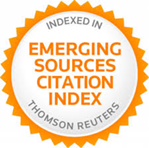Urbicide and Memory in the Short Stories “Noviembre, la madre, 1936” and “Nubes de polvo y humo” by Juan Eduardo Zúñiga
DOI:
https://doi.org/10.37536/PREH.2020.8.2.18Keywords:
Zúñiga, Short Story, Urbicide, Memory, SpaceAbstract
Juan Eduardo Zúñiga’s short stories about the Spanish Civil War, in which the author places a strong emphasis on the lives of the citizens as they
navigate the chaos of wartime and the destruction of the capital city amidst the bombing, constituted a landmark in literary production on the war since the first collection was published in 1980. Through the theories of urbicide developed by Martin Coward and writings on urban trajectories, this study proposes a close reading of two short stories from Largo noviembre de Madrid in order to explore the stylistic and thematic devices employed by the author. This paper will explore the similarities with other stories of the collection while at the same time emphasizing the particularities and unique qualities of each of the two works chosen. In their physical movements and spatial trajectories through the bombed-out streets and avenues of the city, the protagonists of both stories reaffirm the role of memory in the development of the human psyche. Each step taken as they move through the capital reaffirms the ways in which the personal memories developed in connection to particular spatial and urban locations function as a site of memory and political resistance against erasure.
References
AFP (2008): “España rompe el ‘pacto de silencio’ 70 años después de la Guerra Civil”. Accesible en <https://www.nacion.com/el-mundo/espana-rompe-el-pacto-de-silencio-70-anos-despues-de-la-guerra-civil/AN3DT6EBHJCCTMID63JEFYXBL4/story/> [última visita: 10.1.2020].
Bachelard, Gaston (1958): The Poetics of Space. París, PUF.
Beltrán Almería, Luis (2018): “La Guerra Civil en los relatos de Zúñiga”, Orillas, n.º 7, pp. 5-15.
Beltrán Almería, Luis (2000): “Las estéticas de Juan Eduardo Zúñiga”, Anales de la literatura española contemporánea, vol. 25, n.º 2, pp. 357-387.
Bordes, Enrique; y de Sobrón, Luis (2019): Madrid bombardeado: 1936-1939. Accesible en <https://www.madridbombardeado.es/> [última visita: 18.1.2020].
Bravo, Pedro (2019): “No se puede entender Madrid sin conocer las cicatrices dejadas por los bombardeos de la Guerra Civil”. Accesible en <https://www.eldiario.es/desdemi-bici/Madrid-cicatrices-bombardeos-Guerra-Civil_6_877772215.html> [última visita: 18.1.2020].
Calderón Puerta, Aránzazu (2018): “Memoria, olvido y la transición histórica en el relato ‘Ruinas, el trayecto: Guerda Taro’ de Juan Eduardo Zúñiga”, Sociocriticism, n.º 33, pp. 193-214.
Carmona, Elena Reina; y García, Erica C. (1989): “Open Reading of a Closed Text: Zúñiga’s ‘Puertas abiertas, puertas cerradas’”. En Yishai Tobin (ed.): From Sign to Text: A Semiotic View of Communication. Amsterdam, John Benjamins Publishing, pp. 235-252.
Cogotti, Carla (2015): Rete simbolica e dinamiche della memoria nella trilogía della guerra civile di Juan Eduardo Zúñiga. Cagliari, Università degli studi di Cagliari.
Coward, Martin (2009): Urbicide: The Politics of Urban Destruction. Nueva York, Routledge.
Cruz, Juan (2009): “He escrito para salvarme del frío de la guerra”. Accesible en <https://elpais.com/diario/2009/06/04/cultura/1244066403_850215.html> [última visita: 30.12.2019].
Davies, Ann (2012): Spanish Spaces: Landscape, Space and Place in Contemporary Spanish Culture. Liverpool, Liverpool University Press.
De Certeau, Michel (1984): The Practice of Everyday Life. Berkeley, University of California Press.
Díaz Navarro, Epícteto (2018): “La representación de la guerra en Capital de la gloria (2003), de Juan Eduardo Zúñiga”, Revista de Filología Románica, n.º 35, pp. 167-176.
Díez, Luis Mateo (2018): “El siglo de Zúñiga”. Accesible en <https://elpais.com/cultura/2018/12/28/babelia/1546001715_211021.html> [última visita: 10.1.2020].
Encinar, Ángeles (2008): “Capital de la gloria: La guerra civil española en la narrativa de Juan Eduardo Zúñiga”, Siglo XXI, literatura y cultura españolas: revista de la Cátedra Miguel Delibes, n.º 6, pp. 161-171.
Encinar, Ángeles (2015): Siguiendo el hilo. Estudios sobre el cuento español actual. Villeurbunne, Orbis Tertius.
Encinar, Ángeles (2019): “Juan Eduardo Zúñiga, precursor de generaciones: De ‘Ojos de miedo’ a ‘Rosa de Madrid’”, Cuadernos hispanoamericanos, n.º 832, pp. 4-13.
Hagglund, Martin (2008): Radical Atheism: Derrida and the Time of Life. Stanford, Stanford University Press.
Haughton, Hugh (2003): “Introduction”. En Sigmund Freud: The Uncanny. Nueva York, Penguin Books, pp. vii-lx.
Hobsbawm, Eric (2007): “War of Ideas.” Accesible en <https://www.theguardian.com/books/2007/feb/17/historybooks.featuresreviews> [última visita: 17.1.2020]
Marcos, José (2019): “Sánchez: ‘La España actual es fruto del perdón, pero no puede ser producto del olvido”. Accesible en <https://elpais.com/politica/2019/10/24/actualidad/1571919877_099051.html> [última visita: 10.1.2020].
Massey, Doreen (2013): Space, Place and Gender. Cambridge, Polity Press.
Prados, Israel (2007): “Introducción”. En Juan Eduardo Zúñiga: Largo noviembre de Madrid, La tierra será un paraíso, Capital de la gloria. Madrid, Cátedra, pp. 13-92.
Sanz Villanueva, Santos (2012): “Historias de una historia: La guerra sin guerra de Juan Eduardo Zúñiga”. Accesible en <http://www.cervantesvirtual.com/obra/historiasde-una-historia--la-guerra-sin-guerra-de-juan-eduardo-zuiga/> [última visita:1.7.2020].
Viñas, Ángel (2019): “Franco y el 24-O”. Accesible en <https://elpais.com/elpais/2019/10/22/opinion/1571756806_262744.html> [última visita: 15.1.2020].
Wilson, Elizabeth (1991): The Sphinx in the City: Urban Life, the Control of Disorder, and Women. Berkeley, University of California Press.
Zúñiga, Juan Eduardo (2007): “Noviembre, la madre, 1936” y “Nubes de polvo y humo”. En:Largo noviembre de Madrid. Madrid, Cátedra, pp. 103-113 y 132-142.
Downloads
Published
How to Cite
Issue
Section
License
Copyright (c) 2020 Pasavento. Revista de Estudios Hispánicos

This work is licensed under a Creative Commons Attribution 4.0 International License.








